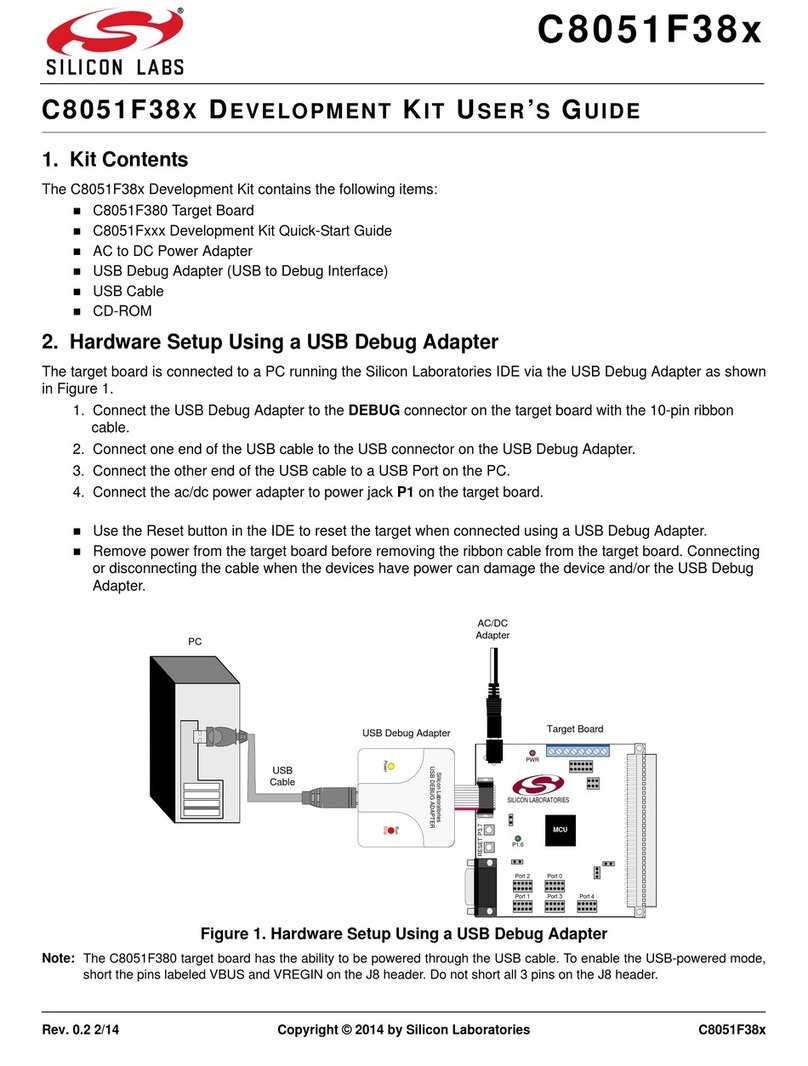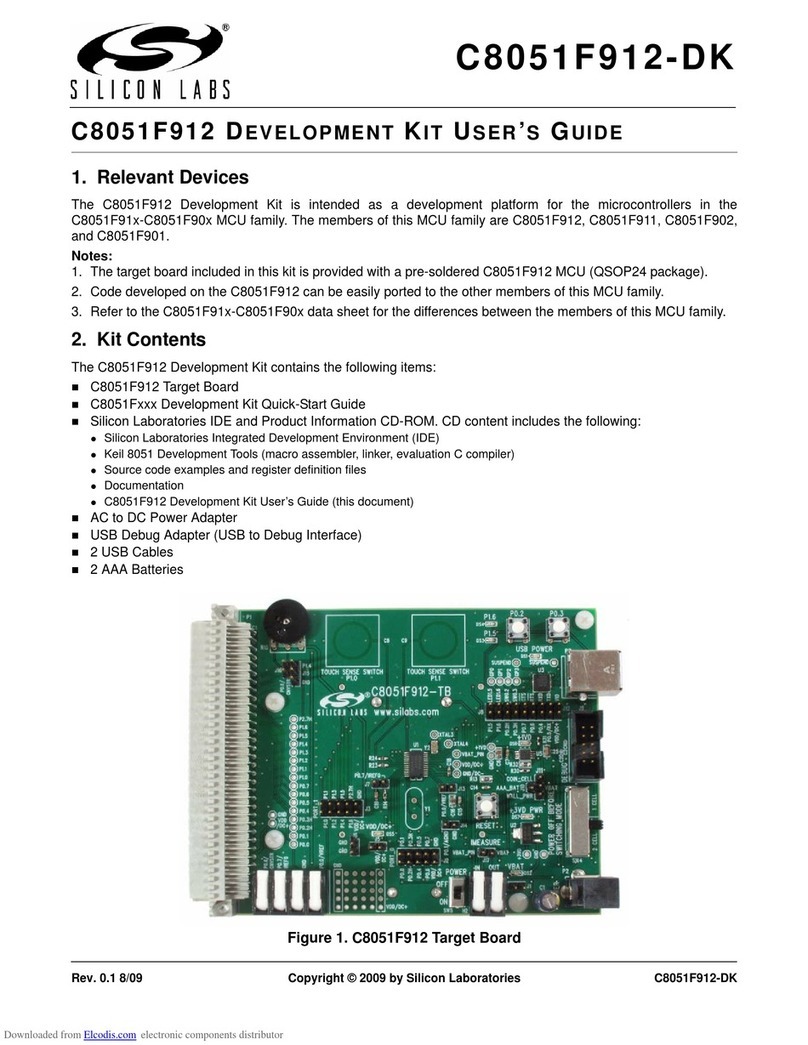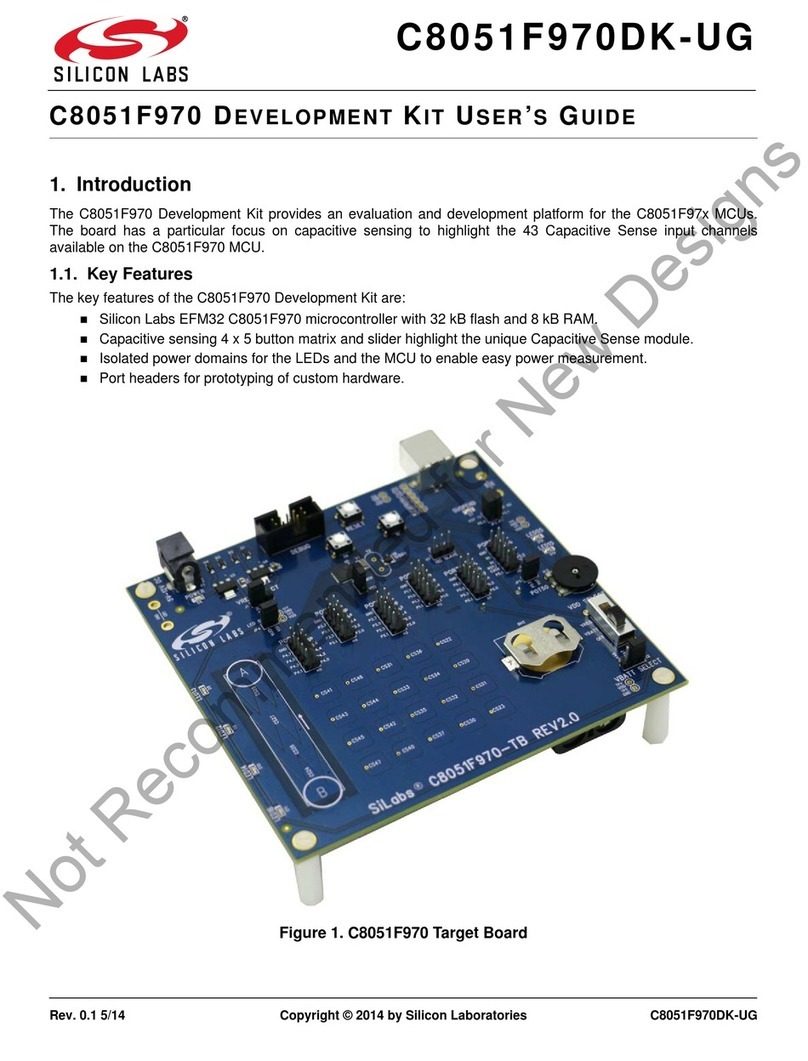Silicon Laboratories EFM32 Instruction Manual
Other Silicon Laboratories Microcontroller manuals
Silicon Laboratories
Silicon Laboratories C8051F336DK User manual
Silicon Laboratories
Silicon Laboratories C8051F30 series User manual
Silicon Laboratories
Silicon Laboratories C8051F02 Series User manual
Silicon Laboratories
Silicon Laboratories Z-Wave 800 Series User manual
Silicon Laboratories
Silicon Laboratories C8051F336 User manual

Silicon Laboratories
Silicon Laboratories C8051F58 Series User manual
Silicon Laboratories
Silicon Laboratories EZR32WG User manual
Silicon Laboratories
Silicon Laboratories C8051F800 User manual
Silicon Laboratories
Silicon Laboratories EFR32MG User manual
Silicon Laboratories
Silicon Laboratories Si106 Series User manual
Silicon Laboratories
Silicon Laboratories C8051F30 series User manual
Silicon Laboratories
Silicon Laboratories C8051F35 Series User manual
Silicon Laboratories
Silicon Laboratories Si4010 Series User manual
Silicon Laboratories
Silicon Laboratories EFR32xG21 Wireless Gecko User manual

Silicon Laboratories
Silicon Laboratories C8051F38 Series User manual
Silicon Laboratories
Silicon Laboratories C8051F330DK User manual
Silicon Laboratories
Silicon Laboratories EFM8SB2 User manual
Silicon Laboratories
Silicon Laboratories EFM8UB1-SLSTK2000A User manual
Silicon Laboratories
Silicon Laboratories EFM32TG User manual

Silicon Laboratories
Silicon Laboratories C8051F912 User manual
Popular Microcontroller manuals by other brands

DIGITAL-LOGIC
DIGITAL-LOGIC MICROSPACE manual

Texas Instruments
Texas Instruments TMS320F2837 D Series Workshop Guide and Lab Manual

CYPRES
CYPRES CY14NVSRAMKIT-001 user guide

Espressif Systems
Espressif Systems ESP8266EX Programming guide

Abov
Abov AC33M8128L user manual

Energy micro
Energy micro EFM32 Giant Gecko Starter Kit user manual






















